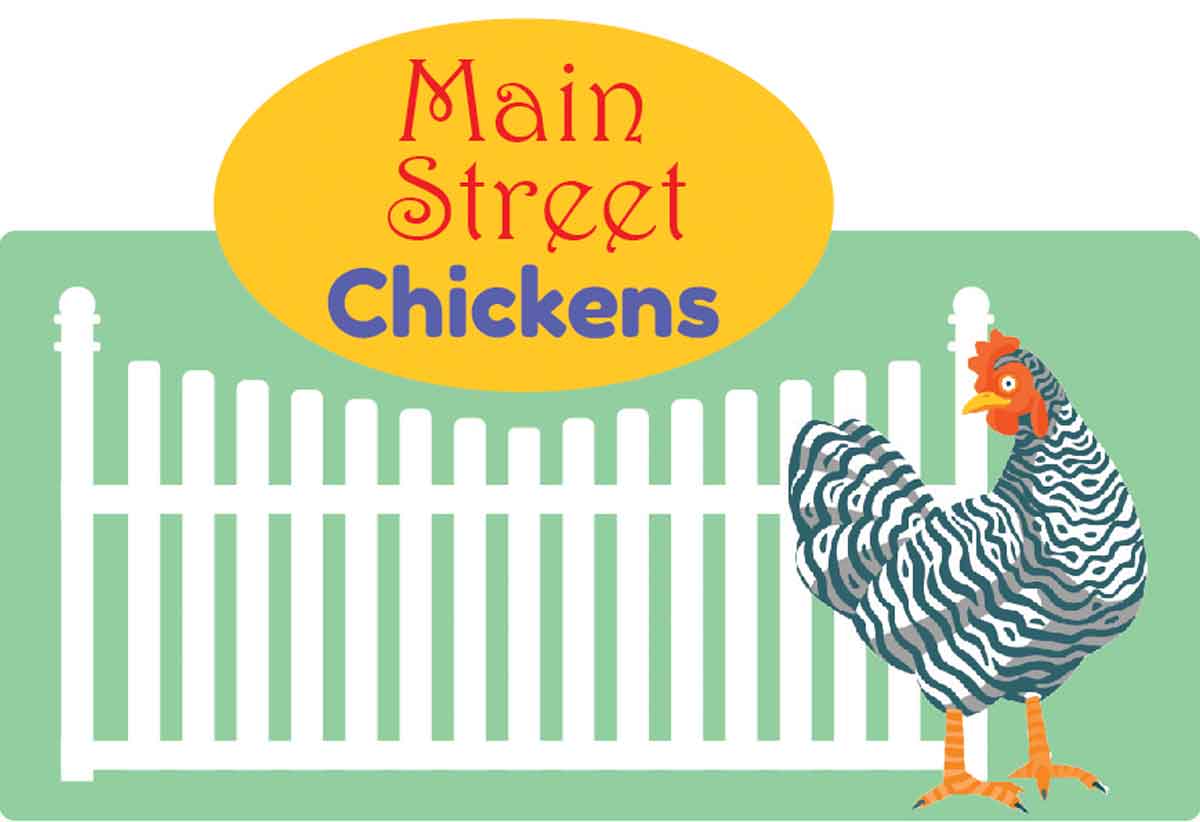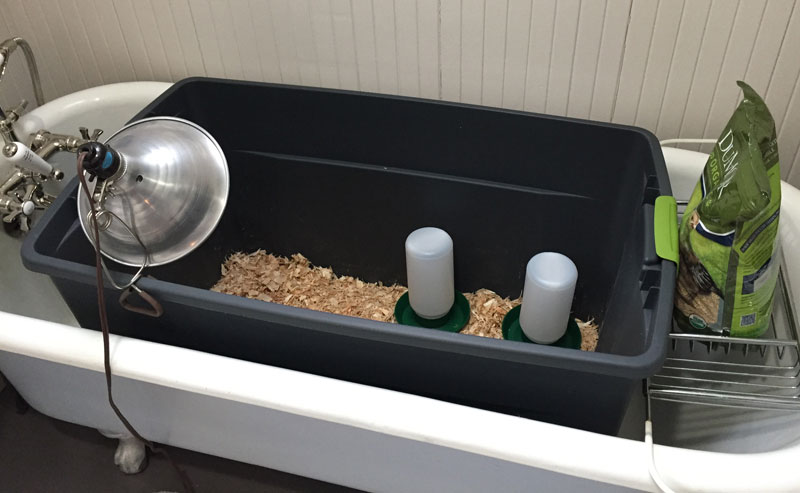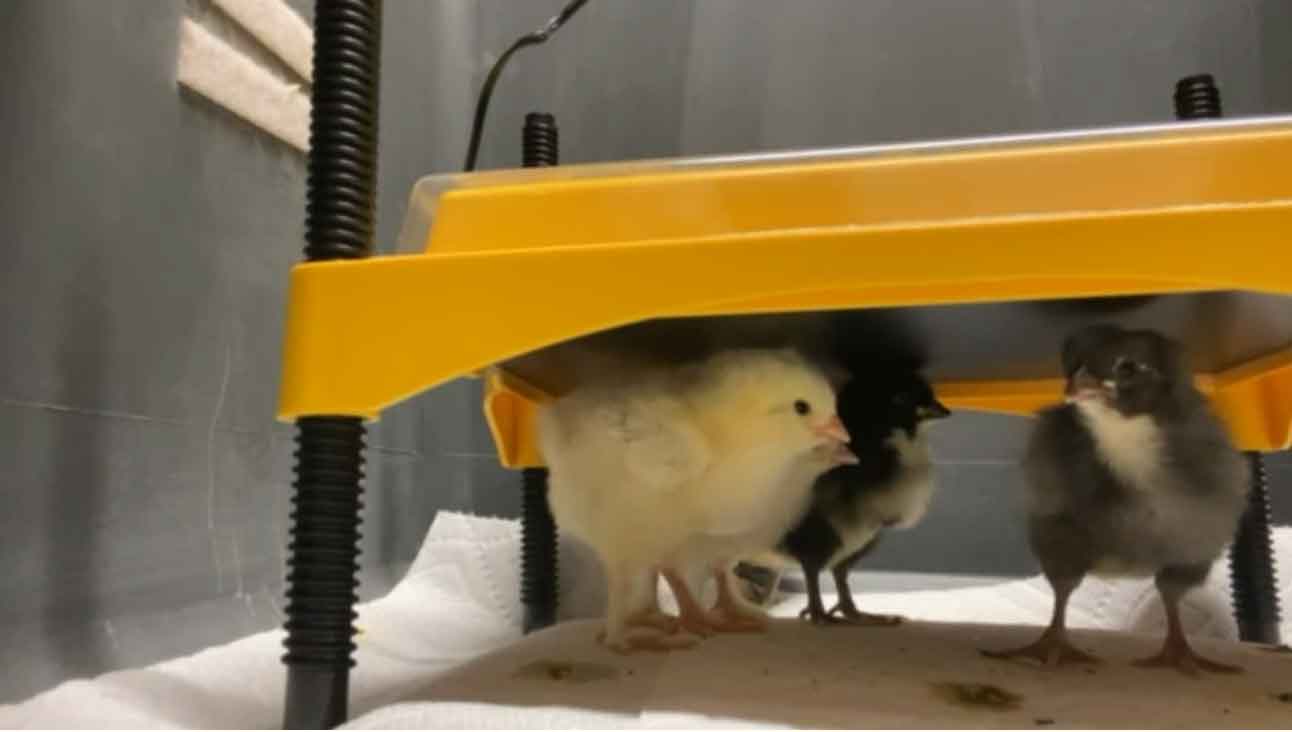Chicken Brooder
The brooder is the chicks’ safe haven until they move to the coop and should be spacious, safe, and easy to clean.
Your Role as the Mother Hen
The Brooder
Now, let’s talk about creating the ultimate chick headquarters—aka, the brooder! You become the honorary mother hen, complete with all the love and warmth (and maybe a cluck or two). The brooder is a warm, safe place where your baby chicks will spend the first several weeks of their lives. It’s possible to have your hens hatch their own eggs but for most backyard flocks, the brooding begins with you. Make sure your brooder is prepared and prewarmed before you receive your chicks. If you purchase your supplies at the same time as your chicks, then keep the chicks in the container you purchased them in while you set up your brooder. And remember, hands off for the first 24 hours. These little fluffballs need some settling-in time. Keep the stress levels low, and you’ll have a happy, chirpy crew in no time. It’s all about making their grand entrance into your world as smooth as possible.
Brooder Check List
Brooder Box
For a small flock of 3 to 6 chicks, you want something large, like a 45-gallon (or bigger) storage container that you can later store your food and other supplies in. You can also use a cardboard box or make your own container out of wood. But keep in mind, by 8 weeks, they’ll be staging a coup against their cozy digs, ready for a coop upgrade! Exactly when they move into the coop depends on the weather and how much their feathers have filled out. Unless you have very high sides, you might want to construct a lid out of hardware cloth or chicken wire to keep the chicks from flying out. Always keep your brooder in a safe area away from household pets like cats and dogs. Safety first, peeps!
Litter
For the first few days, paper towels are good to line the bottom as they can be refreshed and replaced regularly. By about the third day, you may want to begin using pine shavings to absorb the waste which will help keep the chicks clean. Keep the brooder clean by changing the shavings as often as needed.
Food and Water
Day-old chicks through 18 weeks old require starter crumbles which don’t require grit to digest and contains a high percentage of protein to accommodate their fast growth in the early weeks. If your chick has not been vaccinated then you should buy the medicated brand. Quart sized food and water feeders are a good size for chicks, and although they will outgrow them quickly, you may find they come in handy down the road. The food and water feeders are best elevated on something like a brick or 2 x 4 board so the chicks don’t spill or walk in the food and water. As they get bigger, they can be elevated even more using a shoebox or other pieces of wood. Pop in a board on its side, and voila! Your chicks now have a VIP roosting spot. Even very young chicks have the natural tendency to roost.
Heat Lamp
You can use a brooder heat lamp with 150-watt red infrared heat bulb. The red bulb is less stressful on the chicks than a white light which can keep them from sleeping. There are also flat heating plates on the market which allow the chicks to go under the plate just as they would with a mother hen. The plate can by moved up and down to adjust to the chick’s temperature needs.
Temperature
Remember to purchase a thermometer so you can monitor the heat in the brooder. Baby chicks need to keep warm so make sure you are continually monitoring the temperature. If the brooder is large enough, the chicks are allowed to move away from the heat source if they are too hot and get closer, or huddle together, if they are too cold. This is your biggest clue for adjusting the heat.
And remember, hands off for the first 24 hours. These little fluffballs need some settling-in time. Keep the stress levels low, and you’ll have a happy, chirpy crew in no time. It’s all about making their grand entrance into your world as smooth as possible.
It’s important not to handle the chicks for the first 24 hours while they settle in to keep the stress levels low.
Caring for Young Chicks
Raising young chicks requires extra attention and care. Once you’ve set up your brooder and oriented your chicks, here are some crucial tips for ensuring the health of your fluffy newcomers.
Specialized Chick Feed
Start your chicks on a high-quality chick starter feed specifically formulated to meet the nutritional needs of growing chicks, providing the essential proteins and vitamins required for healthy development.
Warmth with a Heat Lamp
Chicks need a warm environment, especially during their early days. Use a heat lamp to maintain a temperature of around 95°F (35°C) in the brooder area. Gradually reduce the temperature by 5°F (2.8°C) each week until the chicks are fully feathered.
Monitor Temperature with a Thermometer
Place a thermometer in the brooder to ensure the temperature remains within the recommended range. Adjust the height of the heat lamp or the heating plate accordingly to maintain a comfortable environment for the chicks.
Handle them gently
From day one, handle your chicks with care. Give them about 24 hours to acclimate before you remove them from the brooder.
Start early with the snuggles
The sooner you start, the sooner you’ll have a squad of social butterflies that are comfortable with human interaction. Chicks are naturally curious, so take advantage of that.
Chick chat time
Get them used to the sound of your voice. This helps them associate you with positive experiences.
Use treats
Be the snack king or queen! Treats are like the golden ticket to trust. Just make sure the treats are age-appropriate.
Create a positive environment
Ensure their living space is comfortable, warm, and safe. If they associate you with comfort, you’re their feathered BFF.
Be patient
Some chicks are born drama queens; others are the strong, silent types. Be patient, let them set the pace, and soon you’ll be in their inner circle.
Introduce them to different experiences
Expose them to various sounds, objects, and environments. This helps them become more adaptable and less fearful.
Avoid sudden movements
Quick, unexpected movements can startle chicks. Move slowly and predictably around them.
Frequent but short interactions
Regular, short interactions are better than infrequent, long ones. This helps them gradually get used to your presence.
Provide entertainment
Chicks are curious and easily bored. Offer them toys or objects to peck at and explore.
Remember, every chick is an individual, so what works for one might not work for another. Enjoy the process of getting to know your feathered friends!



